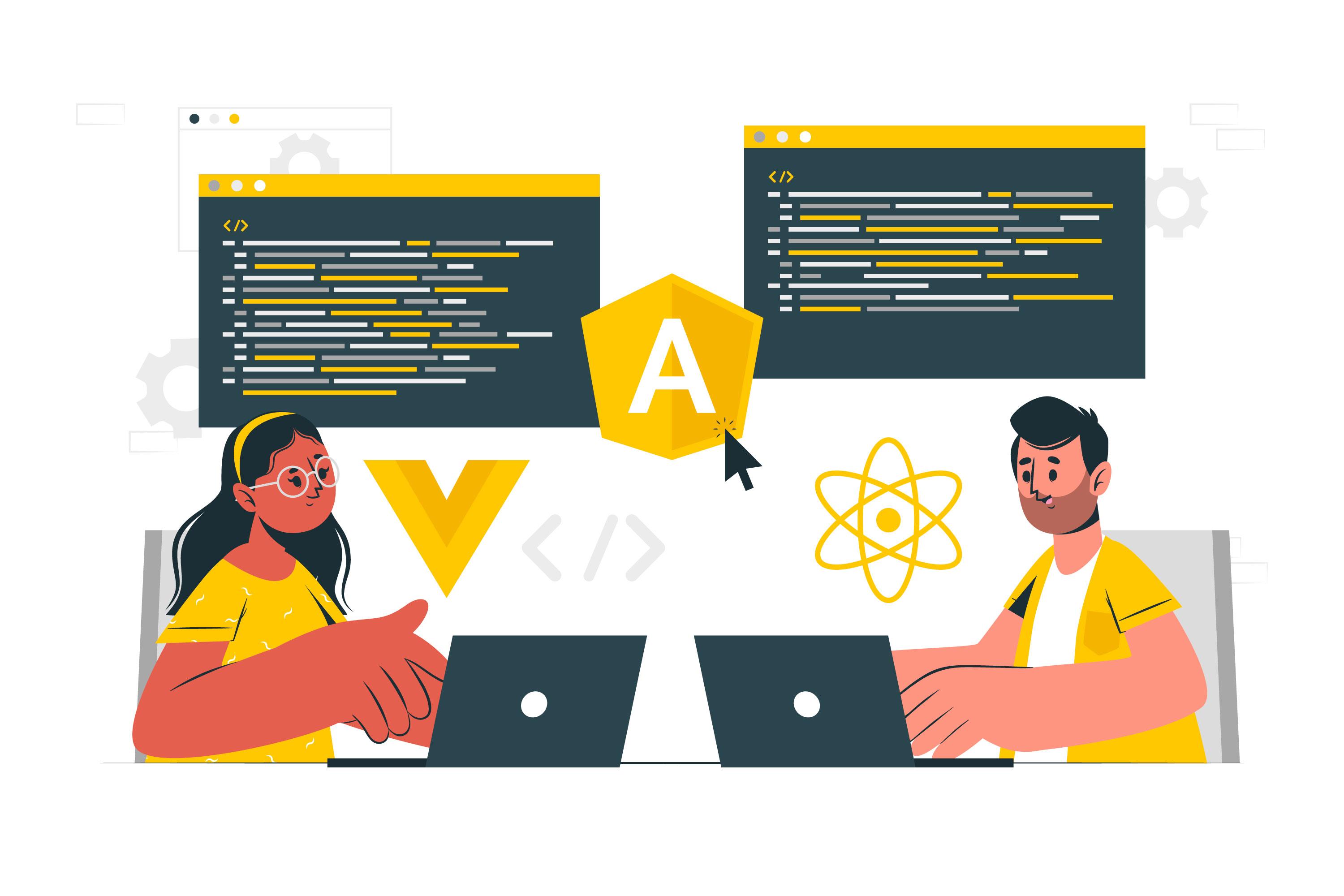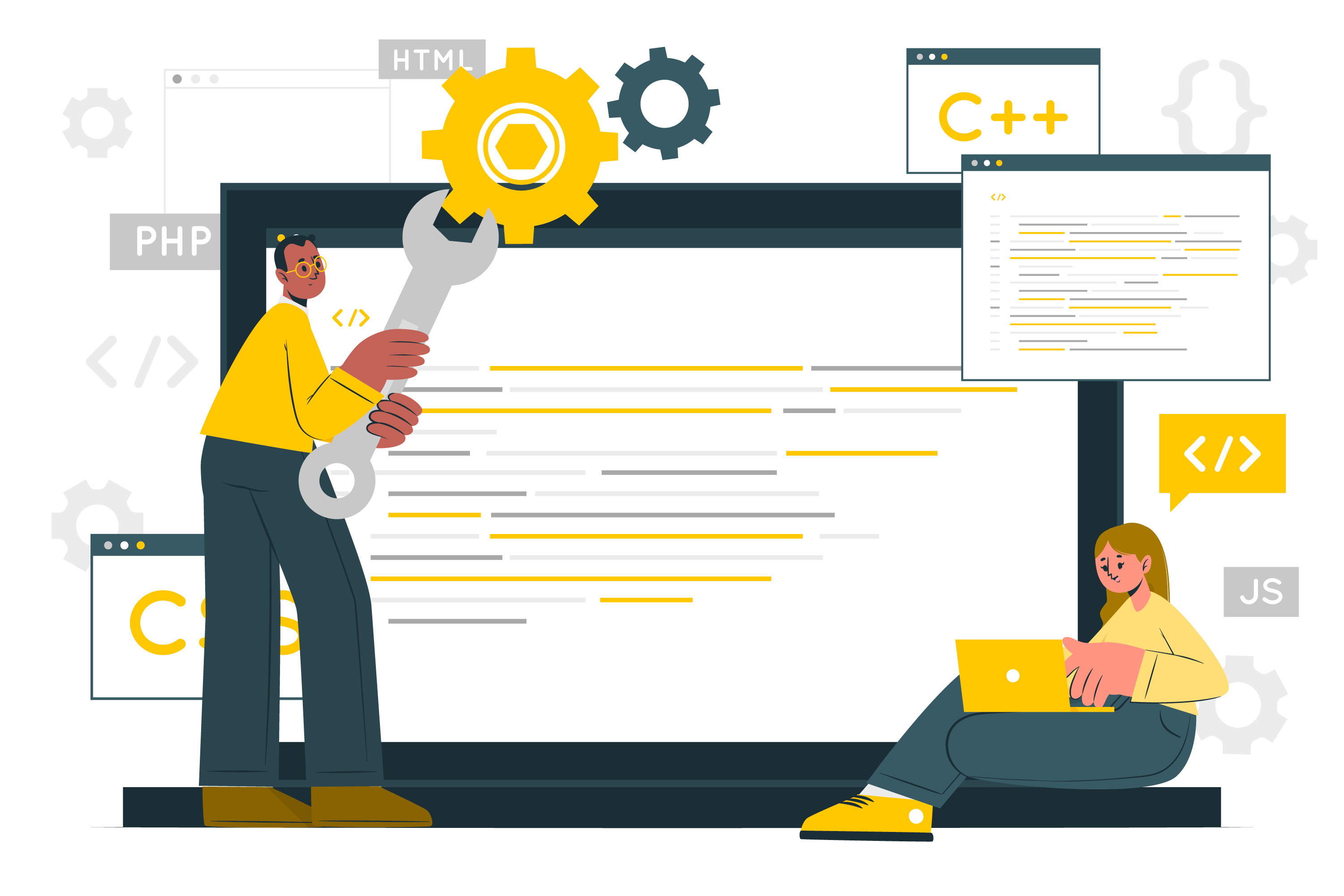
How to Choose the Best Web Development Courses Online
Discover expert tips to pick top web development courses: certification, flexible learning, career-ready skills. Start your tech journey now!
How to Choose the Best Web Development Courses Online
Web development is one of the most in-demand skills today, opening doors to rewarding careers and freelancing opportunities. With countless online courses available, it can be overwhelming to decide which one suits your needs.
This guide will help you evaluate and select the best web development courses online, ensuring your time and effort are well-spent.
1. Define Your Goals

Before diving into any course, it’s essential to know what you want to achieve. Are you aiming to become a front-end developer who works on the design and user interface? Or do you prefer back-end development, focusing on server-side logic and databases? Perhaps full-stack development, covering both front-end and back-end, is what you need.
If you’re also interested in design, look for a web development and designing course. These courses combine coding with design principles, giving you a well-rounded skill set.
2. Evaluate Course Content and Curriculum
The course curriculum should be a major deciding factor. Ensure the course covers the following essential technologies:
HTML: The foundation of all web pages.
CSS: For styling and layout.
JavaScript: To add interactivity.
Frameworks like React, Angular, or Vue.js for front-end development.
Back-end technologies such as Node.js, Python, or PHP.
Database management using MySQL, MongoDB, or similar tools.
For those pursuing a web development and designing course, check if the curriculum includes UX/UI design fundamentals, wireframing, and tools like Figma or Adobe XD.
3. Consider Course Duration and Flexibility
Web development courses come in various formats, from short bootcamps to in-depth programs spanning several months. Evaluate how much time you can dedicate to learning:
Course Type | Typical Duration |
Beginner crash courses | 2-4 weeks |
Comprehensive programs | 3-6 months |
Full-time bootcamps | 8-12 weeks |
4. Check Accreditation and Certification
An accredited course or one that offers recognized certifications can boost your job prospects. Employers value certificates from reputable platforms like:
Coursera (certificates from top universities like Stanford or MIT)
edX
Google or Meta certification programs
FreeCodeCamp (respected in the developer community)
When browsing web development courses online, prioritize those that highlight accreditation or partnerships with industry leaders.
5. Analyze Instructor Expertise

Researching the background of instructors is crucial because a course’s quality heavily depends on their expertise. Seek out courses taught by experienced developers with real-world project experience.
Platforms such as Udemy and LinkedIn Learning typically showcase instructor profiles, detailing their years of industry experience, notable projects, and reviews from previous students. Instructors with hands-on knowledge can offer valuable insights and practical advice that extend beyond theoretical concepts.
6. Read Reviews and Testimonials
Gathering student feedback is one of the best ways to gauge course quality. Reviews and testimonials from platforms like Reddit, Quora, or specialized forums provide unbiased insights.
Pay attention to student satisfaction levels, the practicality of the course content, and the quality of support provided by instructors or the platform. When multiple students consistently praise a course’s effectiveness, it’s likely a strong option worth considering.
7. Evaluate Hands-On Experience and Projects
Theoretical knowledge isn’t enough in web development. Look for courses that include:
Hands-on coding exercises
Real-world projects - These can range from building basic websites to developing full-stack applications.
Portfolio-building opportunities - A strong portfolio is crucial for landing a job or freelance clients.
Courses offering capstone projects or mentorship programs often stand out in this regard.
8. Assess Cost and Value

Web development courses range from free options to premium subscriptions and one-time payments. Here’s a breakdown:
Pricing Model | Examples | Features |
Free | FreeCodeCamp, Codecademy | Limited content but great for beginners |
Subscription-based | Pluralsight, Udemy | Access to multiple courses at a monthly fee |
One-time payment | Udemy, Coursera | Pay once, own the course forever |
Premium bootcamps | General Assembly, STEM Link | High cost but often include job placement help |
Choose a course that aligns with your learning goals and budget while offering good value for the price.
9. Explore Post-Course Support and Resources
A great course offers value that extends well beyond its final session. Look for features like alumni communities or forums where you can stay connected and continue learning. Additional resources such as eBooks, cheat sheets, or webinars can also enhance your skills and provide helpful references as you grow.
Career support services, including resume reviews or job placement assistance, are another sign of a course that’s invested in your success. These post-course benefits are especially valuable when working on your first projects or navigating the job application process.
10. Check for Current Curriculum
Web development evolves rapidly, with new tools and frameworks emerging regularly. Ensure the course content reflects the latest industry trends, such as:
Modern JavaScript (ES6+)
Popular frameworks like React or Next.js
Cloud services like AWS or Firebase
Responsive design techniques
Courses that are updated frequently are more likely to provide relevant skills.
Conclusion
Choosing the right web development course online can feel overwhelming, but breaking it down into clear criteria simplifies the process. Focus on your learning objectives, evaluate course content, and prioritize practical experience. Verify the instructor’s expertise, read reviews, and ensure the course is up-to-date.
Once you've found the right fit, start learning and building your skills. Whether you're aiming for a new career or expanding your knowledge, the right course will set you on the path to success.
Ready to get started? Explore options on trusted platforms and join STEM Link today to kickstart your web development journey!
FAQs
1. Are online web development courses worth it?
Online web development courses are worth it when they offer practical skills, up-to-date content, and hands-on experience. These courses often provide flexibility, allowing you to learn at your own pace while working on real-world projects that build your portfolio.
Many programs also include support like peer communities, mentor guidance, or career services, making them valuable for both beginners starting from scratch and professionals looking to enhance their expertise. However, success depends on your commitment and selecting a course that aligns with your learning style and career goals.
2. What is the best place to learn web development?
The best place to learn web development depends on your learning style and goals. Popular options include online platforms like Codecademy, free resources such as FreeCodeCamp, and structured programs like those offered by universities or coding bootcamps.
For an AI-driven approach to full-stack development, STEM Link provides comprehensive courses designed to teach both foundational and advanced skills, with a focus on modern tools and industry-relevant techniques. These programs often include hands-on projects and career support, making them a strong choice for aspiring developers.
3. Can I learn web development in 3 months?
Yes, it’s possible to learn the basics of web development in three months, especially with a structured plan and consistent effort. In this timeframe, you can grasp core concepts like HTML, CSS, JavaScript, and basic responsive design. You might also complete small projects, such as building a portfolio website, to showcase your skills.
However, becoming proficient or job-ready often takes more time. Advanced topics like back-end development, frameworks (e.g., React or Node.js), and deploying websites require additional learning and practice. With focus and dedication, three months can give you a solid foundation to build on.
4. Is web development high paying?
Web development can be a high-paying career, especially as you gain experience and specialize in areas like front-end, back-end, or full-stack development. Entry-level roles often offer competitive salaries, while experienced developers or those with expertise in modern frameworks, AI integration, or cloud technologies can earn significantly more.
The demand for skilled web developers continues to grow, making it a lucrative field for those with the right skills and a strong portfolio. Factors like location, industry, and the complexity of your projects also influence earning potential.
5. What type of web developer is most in demand?
Full-stack developers are among the most in-demand web developers because they can work on both the front-end (user interface) and back-end (server-side) of web applications. Their versatility allows them to handle entire projects, making them highly valuable to businesses.
Specialists in specific technologies are also in demand. For example, front-end developers skilled in React or Angular, and back-end developers experienced with Node.js, Python, or cloud-based solutions, are sought after. Additionally, developers with expertise in AI integration, cybersecurity, or performance optimization are gaining traction as companies prioritize advanced, secure, and efficient web solutions.
You may also like
Coach Jordan: The AI That Makes Your Resume Work as Hard as You Do
You've spent hours perfecting your resume. Every word carefully chosen. Every achievement meticulously listed. You hit "submit" on that *dream job application*, fingers crossed. Then nothing. Your resume disappears into the void.
The Complete Guide to Best AI Models, Model Pricing & Real-World Applications
Navigate the complex LLM landscape with our comprehensive guide. Understand model selection, pricing structures, and real-world applications tailored for developers, teams, and professionals while making informed AI decisions that save money without compromising quality.
The Complete Software Engineer Roadmap 2026: From Zero to Hired in 8 Months (No Degree Required)
This roadmap has placed 250+ complete beginners into software engineering roles in 2025 via [STEM Link](https://stemlink.online/products/bootcamps)**, bypassing the traditional path entirely. No CS degree required. No algorithms PhD needed. No leetcode grinding for 2 years.


